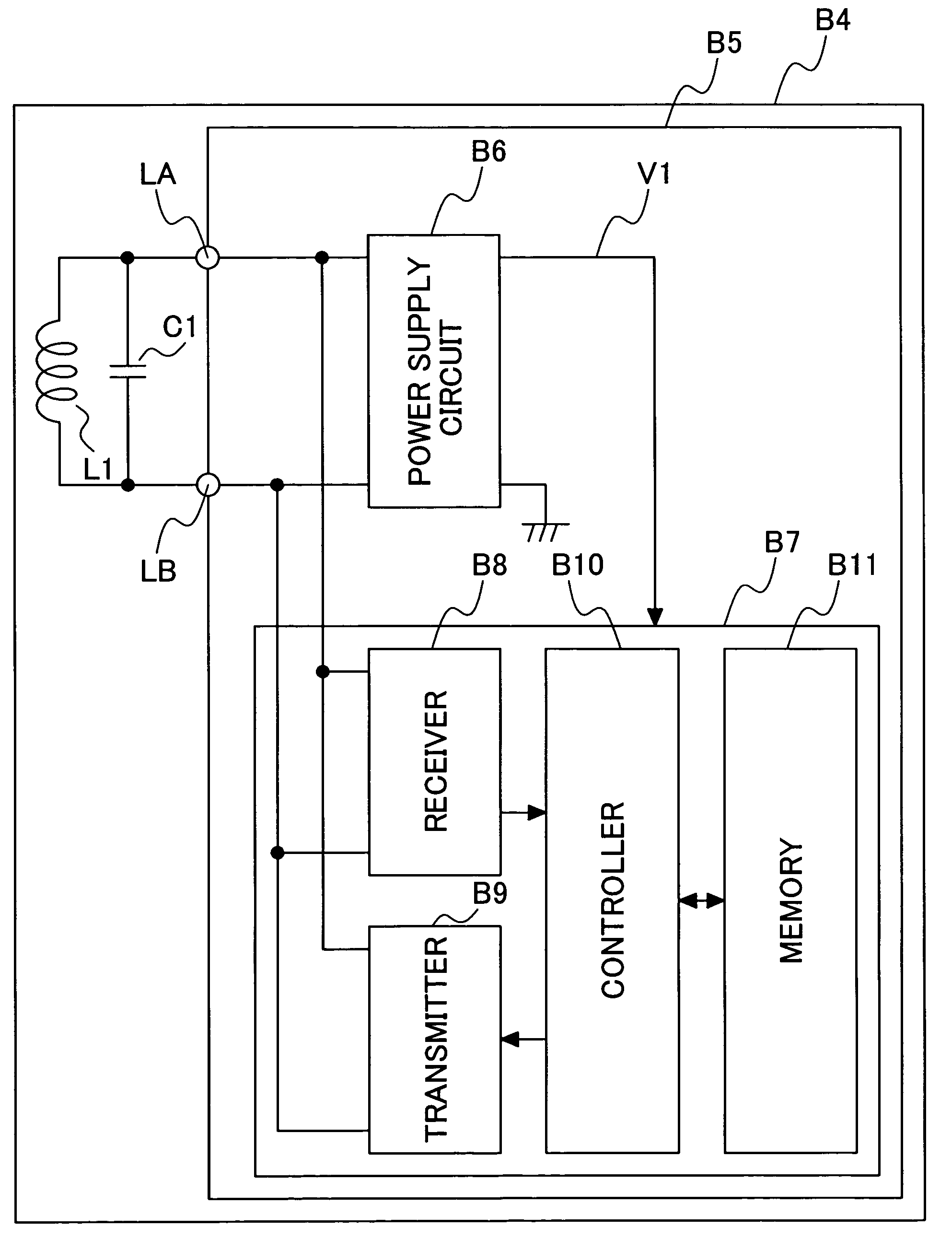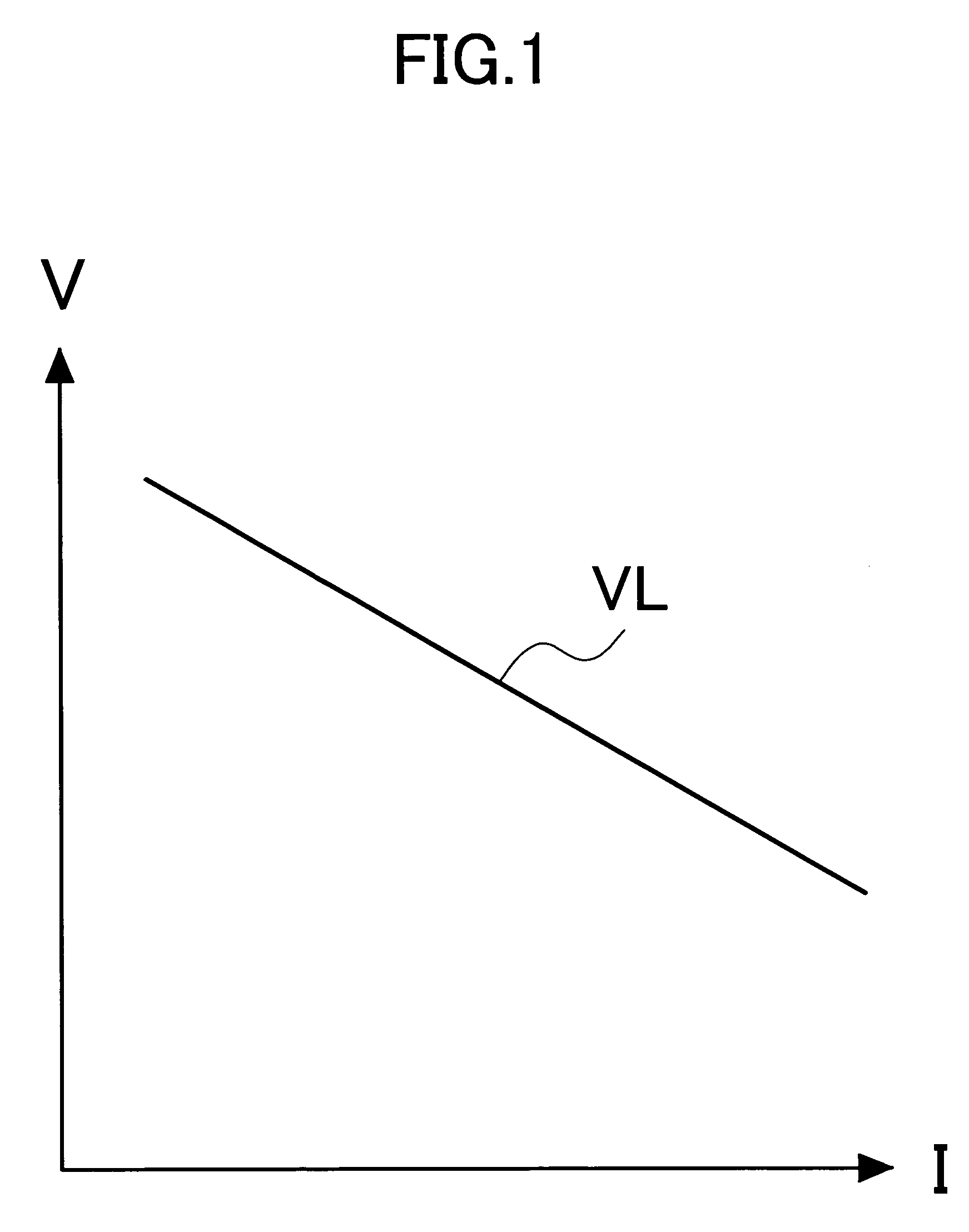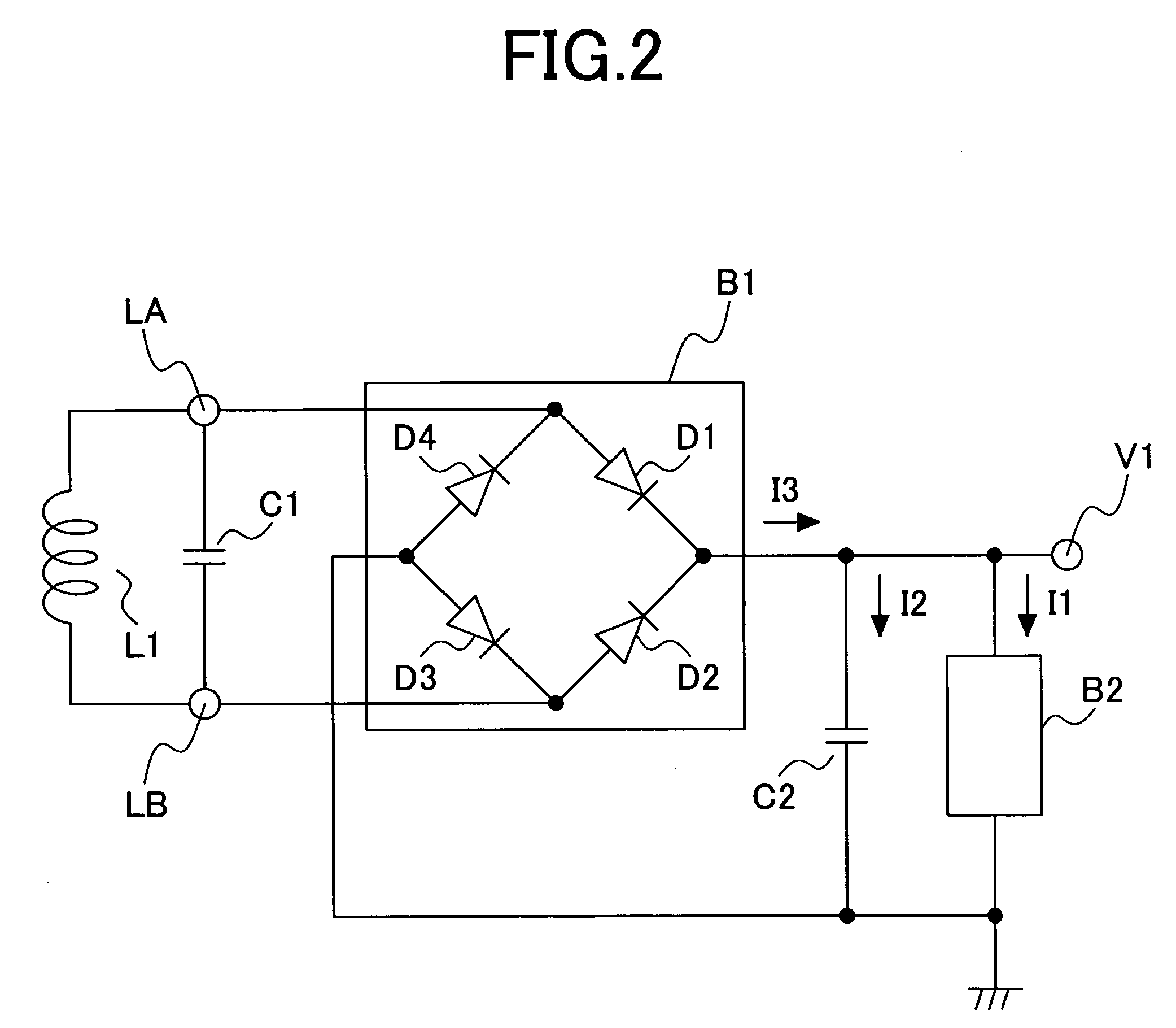Semiconductor integrated circuit device and contactless IC card
a technology of integrated circuit device and contactless interface, which is applied in the field of semiconductor integrated circuit device and contactless ic card, can solve the problem of becoming difficult to extend the communication distance between the ic card and the interrogator in operation via the contactless interfa
- Summary
- Abstract
- Description
- Claims
- Application Information
AI Technical Summary
Benefits of technology
Problems solved by technology
Method used
Image
Examples
embodiment 1
[0039]FIG. 4 is a block diagram showing a basic structure of a first embodiment of the semiconductor integrated circuit device and contactless IC card according to the present invention. In FIG. 4, the contactless IC card is identified by B4 and the semiconductor integrated circuit device and the antenna are identified by B5 and L1 respectively, which are mounted on the IC card B4. The antenna L1 and a capacitor C1 connected in parallel with the antenna L1 constitute a resonance circuit. The semiconductor integrated circuit device B5 is configured with a power supply circuit B6, an internal circuit B7, and antenna terminals LA and LB for the connections of the lines from the antennal L1.
[0040]FIG. 5 shows the structure of the IC card B4. The card form of the IC card B4 is given by a resin mold printed wiring board T1. The antenna L1 that receives electromagnetic waves from an external interrogator T4 is constructed in a spiral coil T2 formed by wiring on the printed wiring board T1....
embodiment 2
[0057]FIG. 8 is a circuit diagram showing another configuration of the feedback path which is a constituent of the receiver circuit in the semiconductor integrated circuit device discussed in Embodiment 1. The feedback path of this embodiment is configured such that two chains of diodes are connected in parallel and oriented in mutually reverse directions, and in each chain, a plurality of diodes are connected in series. In FIG. 8, by way of example, two diode chains, in one of which two diodes D7 and D8 are connected in series, and in the other of which two diodes D9 and D10 are connected in series, are connected in parallel and oriented in reverse directions.
[0058]The output signal of the operational amplifier A1 in FIG. 6 has amplitude that is about double the forward voltage of a PN-junction diode, relative to the reference voltage V2. On the other hand, by using the feedback path configuration of this embodiment, the amplitude of the output signal of the operational amplifier A...
embodiment 3
[0059]FIG. 9 is a circuit diagram showing yet another configuration of the feedback path which is a constituent of the receiver circuit in the semiconductor integrated circuit device discussed in Embodiment 1.
[0060]Since the output voltage of the operational amplifier A1 changes, relative to the reference voltage V2, the minimum operating voltage of the receiver circuit in FIG. 6 can be expressed by the sum of the value of the reference voltage V2 and the forward voltage VF of the diode D5.
[0061]In this embodiment, the feedback path B14 in FIG. 6 is configured with Schottky barrier diodes D11 and D12 instead of the PN-junction diodes D5 and D6. In general, the forward voltage of Schottky barrier diodes is smaller than that of PN-junction diodes. Therefore, by using the Schottky barrier diodes instead of the PN-junction diodes, it becomes possible to lower the minimum operating voltage of the receiver circuit.
PUM
 Login to View More
Login to View More Abstract
Description
Claims
Application Information
 Login to View More
Login to View More - R&D
- Intellectual Property
- Life Sciences
- Materials
- Tech Scout
- Unparalleled Data Quality
- Higher Quality Content
- 60% Fewer Hallucinations
Browse by: Latest US Patents, China's latest patents, Technical Efficacy Thesaurus, Application Domain, Technology Topic, Popular Technical Reports.
© 2025 PatSnap. All rights reserved.Legal|Privacy policy|Modern Slavery Act Transparency Statement|Sitemap|About US| Contact US: help@patsnap.com



